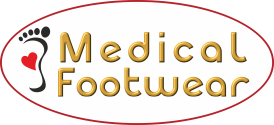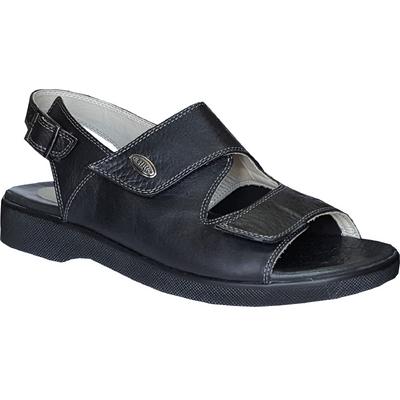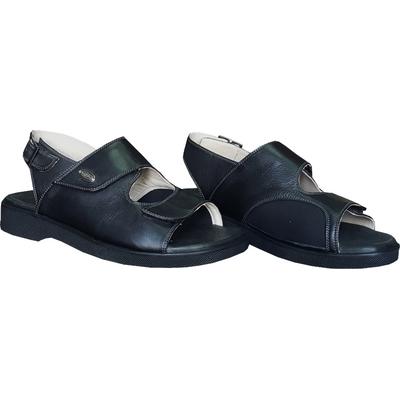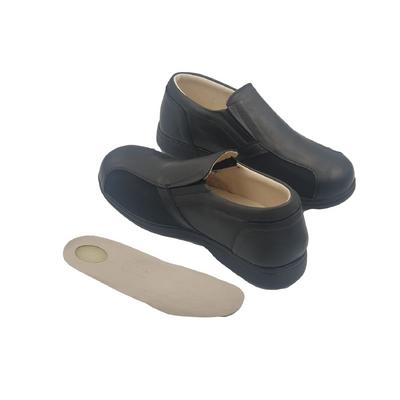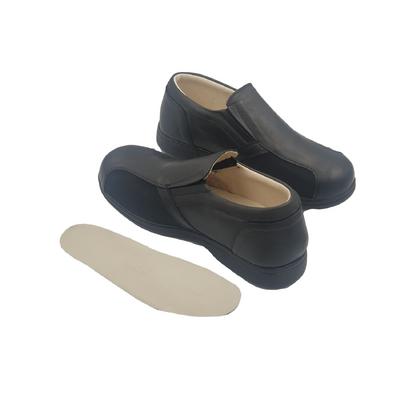Mens Orthopedic Shoes For Bunions and Heel Spurs EPT-HLX-51
Product code : EPT-HLX-51
Mens Shoe Sizes
|
TELEFONDA SİPARİŞ VER
+90 212 671 20 21
Tıklayın, telefonunuzu bırakın. Sizi arayalım.
Mens Orthopedic Shoes For Bunions and Heel Spurs Product Features
► First quality genuine leather
► Soft Leather orthopedic insole
► Silicone support heel area for heel spurs pains
► Men’s bunions shoe size: 39-40-41-42-43-44-45-46-47-48
► 4 Seasonal models
► Antibacterial and don’t sweat
► Suitable for men’s foot anatomy
► Best comfortable shoe for bunions and hallux valgus
► Increase the quality of your life and walk
► PU outsole
► Anti-slip outsole design
► Special shoes model with stretcher
► Colours: Black
► Model code: EPT-HLX-51
► Made in Türkiye
► Brand: Mr. Falcon
► Wide toe area
► Memory sponge
► The height of the toe part of the polyurethane sole is 1.50 cm and the heel height is 3.50 cm.
► it is perfect for bunions, hallux valgus and hummer toe problems.
Note: It is perfect for bunions, hammer toe, claw toe, mallet toe, hallux valgus and bunionettes.
What is Bunions?
A bunion, medically known as "hallux valgus," is a painful bony bump that forms on the joint at the base of the big toe. It occurs when the big toe pushes against the adjacent toe, causing the joint to protrude and often leading to discomfort, inflammation, and difficulty in wearing certain types of shoes. Bunions can be caused by various factors, including genetics, wearing tight or ill-fitting shoes, and structural issues in the foot. Treatment may involve footwear changes, orthotics, or in severe cases, surgical correction.
Benefits of Shoes for Hammer Toes and Bunions ;
• Pain Relief: These shoes often feature extra cushioning and roomy toe boxes that reduce pressure on bunions and hammer toes, providing relief from pain and discomfort.
• Improved Comfort: They are designed to accommodate the unique shape of your feet, offering better overall comfort, especially if you have foot deformities.
• Toe Protection: Specialized shoes have soft, seam-free interiors that prevent friction and irritation on bunions and hammer toes, reducing the risk of calluses and blisters.
• Stability and Support: Many of these shoes have enhanced arch support and shock-absorbing features, promoting better stability and balance, which can be particularly important for individuals with bunions or hammer toes.
• Wider Widths: They often come in wider width options, allowing your toes to spread naturally and reducing pressure on the affected areas.
• Adjustable Straps or Laces: Some models offer customizable closures, which can accommodate foot swelling or different levels of comfort throughout the day.
• Reduced Risk of Progression: Properly fitting shoes can help slow down the progression of bunions and hammer toes, preventing them from getting worse.
• Enhanced Mobility: By reducing pain and discomfort, these shoes can improve your ability to walk and engage in daily activities.
Remember to consult with a healthcare professional or podiatrist for personalized advice on selecting the right shoes for your specific condition and foot shape.
What Are Bunions Symptoms and Risk Factors?
Bunion Symptoms:
• Bony Bump: The most noticeable symptom is a bony bump at the base of the big toe, on the inner side of the foot.
• Toe Deviation: The big toe often leans or angles toward the other toes, causing it to overlap or push against them.
• Pain and Discomfort: Bunions can be painful, especially when wearing tight shoes or walking for extended periods.
• Swelling and Redness: The affected area may appear swollen and red due to inflammation.
• Calluses and Corns: Bunions can lead to the formation of calluses or corns on or between the toes.
• Restricted Toe Movement: As the condition progresses, mobility in the big toe joint may be limited.
Risk Factors for Bunions:
• Genetics: A family history of bunions increases the likelihood of developing them. Certain inherited foot structures can predispose individuals to bunions.
• Footwear: Wearing tight, narrow, or high-heeled shoes can contribute to the development of bunions by putting excessive pressure on the toes.
• Gender: Women are more prone to bunions than men, partly due to the tendency to wear shoes that squeeze the toes together.
• Age: Bunions become more common with age, as the ligaments and tendons in the feet may weaken over time.
• Foot Structure: Certain foot shapes, such as flat feet or low arches, can increase the risk of bunions.
• Medical Conditions: Conditions like arthritis can affect the joint health and contribute to bunions.
• Occupational Factors: Jobs that require prolonged standing or repetitive actions may increase the risk of bunions.
• Injury or Trauma: Previous foot injuries or trauma to the toe area can increase the likelihood of bunions.
• Inflammatory Conditions: Certain inflammatory conditions, such as rheumatoid arthritis, can affect the joint and contribute to bunions.
It's essential to seek medical advice if you experience symptoms of bunions, as early intervention and proper footwear choices can help manage the condition and prevent it from worsening.
What is Hammer Toes and Mallet Toe?
Hammer toes and mallet toes are common foot deformities that affect the toes, causing them to bend or curl abnormally. These conditions can be painful and affect a person's ability to wear regular shoes comfortably. Here's an explanation of each:
Hammer Toes:
• Hammer toes typically affect the second, third, or fourth toes (though they can occur on any toe).
• They are characterized by an abnormal bend in the middle joint of the affected toe, causing it to resemble a hammer.
• The toe may become rigid, making it difficult to straighten.
• Hammer toes can result from various factors, including wearing tight or ill-fitting shoes, foot structure abnormalities, or genetic predisposition.
Mallet Toe:
• Mallet toes, on the other hand, primarily affect the joint at the tip of the toe.
• They cause the affected toe to bend downward at the joint nearest the tip, giving it a mallet-like appearance.
• Like hammer toes, mallet toes can also lead to rigidity in the affected joint.
• The most common cause of mallet toes is wearing shoes with inadequate toe room, which places pressure on the tip of the toes.
Both hammer toes and mallet toes can be painful, particularly when wearing shoes that rub against the bent joints or when walking. Treatment options may include wearing shoes with roomy toe boxes, using cushioned insoles or orthotics, doing toe exercises to improve flexibility, and in severe cases, surgical correction to straighten the toes. It's essential to consult a healthcare professional or podiatrist for an accurate diagnosis and personalized treatment recommendations.
What is plantar fasciitis ?
Plantar fasciitis is a common foot condition that involves inflammation and irritation of the plantar fascia, a thick band of tissue that runs along the bottom of the foot, connecting the heel bone to the toes. The plantar fascia serves as a shock absorber and supports the arch of the foot, helping to maintain its structural integrity during activities like walking, running, and standing.
When the plantar fascia is subjected to excessive stress, it can develop small tears or become inflamed. This condition is known as plantar fasciitis. It often causes sharp or stabbing heel pain, especially in the morning when taking the first steps after waking up or after prolonged periods of rest. The pain typically subsides as the foot warms up and becomes more active, but it may return after prolonged activity or standing.
Several factors can contribute to the development of plantar fasciitis:
» Overuse or Activity: Engaging in activities that place repetitive stress on the feet, such as running, dancing, or standing for long periods, can strain the plantar fascia and lead to inflammation.
» Foot Mechanics: Flat feet, high arches, or abnormal walking patterns can alter the distribution of weight on the feet, putting additional stress on the plantar fascia.
» Obesity: Excess body weight can increase the load on the feet and contribute to the development of plantar fasciitis.
» Footwear: Wearing shoes with inadequate arch support, poor cushioning, or improper fit can contribute to foot discomfort and strain on the plantar fascia.
» Age: Plantar fasciitis is more common in middle-aged individuals, although it can affect people of all ages.
» Tight Muscles: Tight calf muscles and Achilles tendons can affect the flexibility of the foot and contribute to plantar fasciitis.
» Occupational Factors: Jobs that require prolonged standing or walking on hard surfaces can increase the risk of developing this condition.
Treatment for plantar fasciitis usually involves a combination of approaches:
» Rest and Ice: Resting the foot and applying ice can help reduce inflammation and alleviate pain.
» Stretching Exercises: Stretching the calf muscles and Achilles tendons can improve foot flexibility and relieve strain on the plantar fascia.
» Orthotic Inserts: Custom or over-the-counter orthotic inserts can provide arch support and cushioning to reduce strain on the plantar fascia.
» Proper Footwear: Wearing shoes with good arch support and cushioning can help prevent exacerbation of symptoms.
» Physical Therapy: A physical therapist can guide you through exercises to strengthen the foot and improve its mechanics.
» Medications: Nonsteroidal anti-inflammatory drugs (NSAIDs) can help manage pain and inflammation.
» Night Splints: Wearing a splint at night can help keep the foot in a dorsiflexed position, which can alleviate morning pain.
» Corticosteroid Injections: In some cases, corticosteroid injections may be used to reduce inflammation and pain.
» Surgery: Surgery is rarely necessary and is considered only when other treatments have not provided relief.
If you're experiencing persistent foot pain, it's important to consult a healthcare professional for an accurate diagnosis and appropriate treatment recommendations.
There are two main types of heel spurs:
There are two main types of heel spurs:
» Plantar Heel Spurs: These are the most common type of heel spurs. They form on the bottom of the heel bone (calcaneus) and are often associated with plantar fasciitis. Plantar fasciitis is a condition in which the plantar fascia, a thick band of tissue that connects the heel bone to the toes, becomes inflamed. The plantar fascia pulls on the heel bone, and over time, this repetitive stress can lead to the formation of a bony protrusion or spur.
» Posterior Heel Spurs: These spurs form on the back of the heel bone, where the Achilles tendon attaches. They are often associated with Achilles tendinitis, a condition characterized by inflammation of the Achilles tendon. The constant tension and stress on the Achilles tendon can lead to the development of a bony spur at its insertion point on the heel bone.
It's important to note that not everyone with plantar fasciitis or Achilles tendinitis will develop heel spurs, and not all heel pain is caused by spurs. Many cases of heel pain can be effectively managed with conservative treatments such as stretching, physical therapy, orthotic inserts, proper footwear, and anti-inflammatory medications. If you're experiencing persistent heel pain, it's recommended to consult a medical professional for an accurate diagnosis and appropriate treatment plan.
How To Measure Your Foot?
* Look at Men Shoes field in the table below.
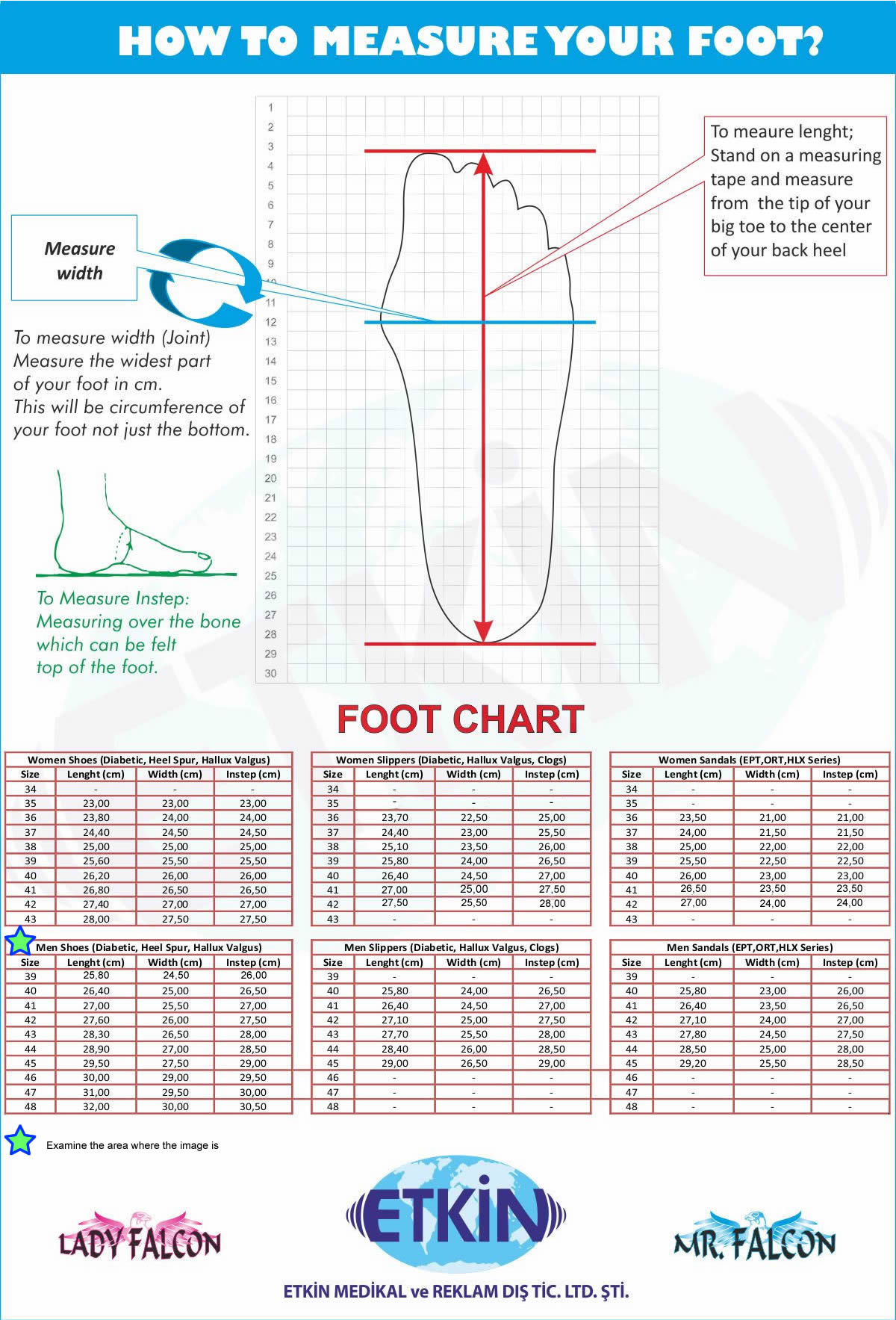
Check out the products / categories below that we think might be of interest to you
Can I shop safely on your site?
All purchases you make through https://www.medicalfootwear.net use the latest technologies and the best service provider for your safety.
Once you enter your credit card number under SSL security, you can be sure that no one will have access to this information. No one can view or access your information except you. The information about your number is encrypted and sent to your bank if you enter your credit card number. Your information can not be accessed by third parties, including https://www.medicalfootwear.net in this sense. Your card information is only known and protected by you and your bank.
Product price : 229.00 USD
When are orders shipped?
Products are generally shipped within 1-5 business days.
When will my order be delivered?
Products shipped are usually delivered to your address within 3-7 business days.
We ship with Fedex, DHL, UPS adn TNT, which are the leading cargo companies of express courier transportation. If you have a different request, please contact our company.
Where can I track my order?
You can track your order in the “my orders” section on our website. In addition, you can track the shipment directly by clicking on the link that is sent to your email address.
I cannot access the tracking information for my order. What am I supposed to do?
You need to contact us directly or through our support department if you encounter such a problem.
Which regions do you ship to?
You can shop online from anywhere in the world.
Safe Shopping
Free Shipping
Shipping Within 1-5 Days
Best Quality Products
These Products May Be Interested
Men's Sandals For Bunions HLX-90AS
169.00 USDHallux Valgus Shoes For Men HLX-53
219.00 USD
Best Selling Products
Hallux Valgus Shoes For Men HLX-53
219.00 USDMen's Sandals For Bunions HLX-90AS
169.00 USD
